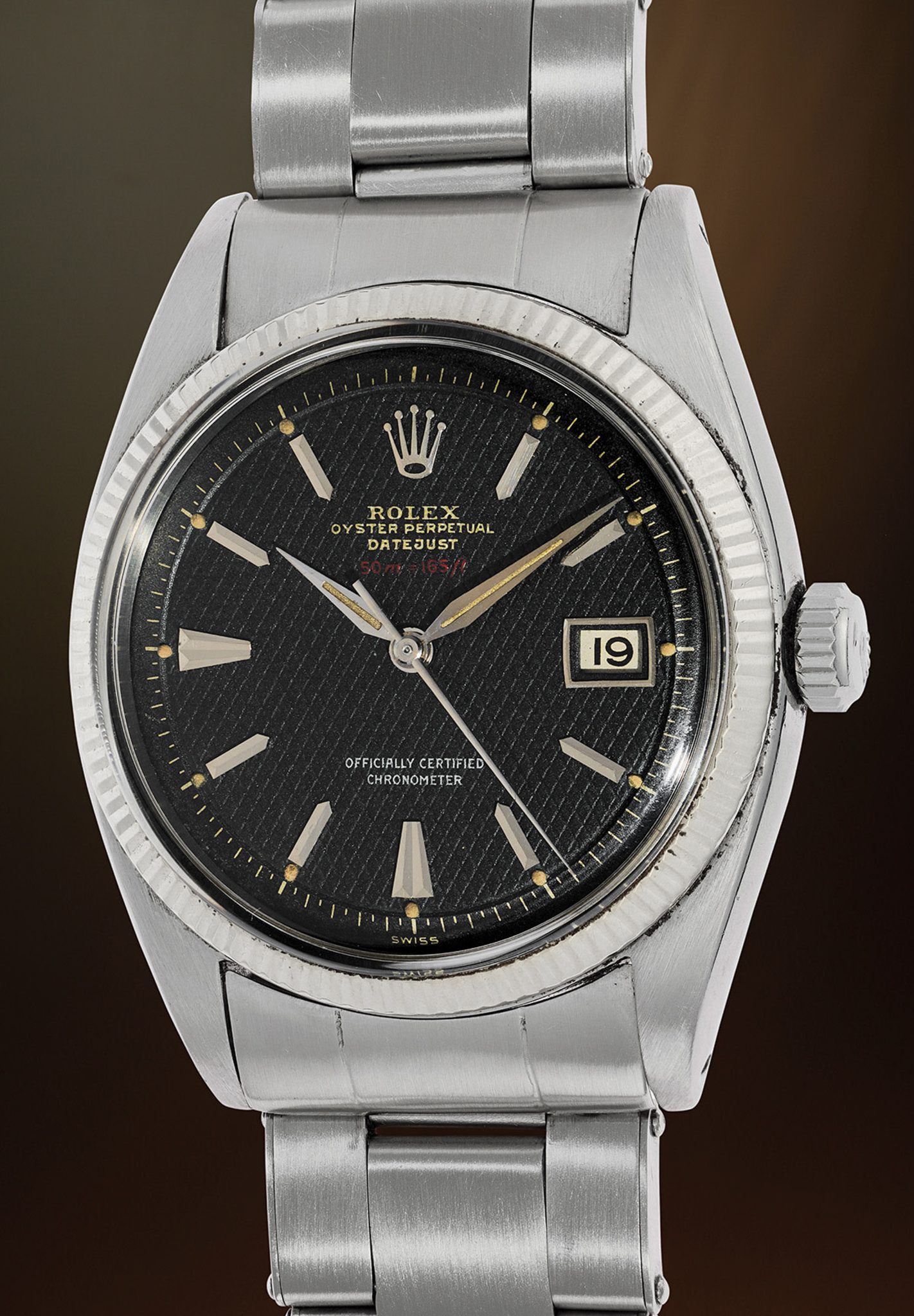
Honeycomb Dial ‘Ovettone’ 6305 Rolex Datejust
Rolex didn’t have the formula perfectly defined in 1955. They had some brilliant ideas around creating tool watches for professionals to use, but weren’t yet certain how to go about it. We observe wild experimentation around these years with what it meant to be an Explorer, Submariner, Milgauss, Oyster Chronograph (there was no Cosmograph yet), or indeed Datejust. This is a ref. 6305, technically a Datejust. But it has a red depth rating, as if 50m is a flex, trying to mirror the aesthetic of other professional Oyster cases like the Submariner. More importantly, however, this is a honeycomb dial. Aptly named, the texture is only seen on Rolex of this era, with nothing like it before or since.

Honeycomb dials and their hexagonal texture mark a specific era of awesome from Rolex and should really be viewed as the ‘exotic’ dial variants of what came after. They’re not nearly as collected as say a ‘true’ exotic Paul Newman Daytona is relative to a standard dial, but they have every right to command that kind of premium over the flat dial ‘Ovettones’. I should probably explain that word. The Italians named this Datejust case style first, as most things. ‘Ovettone’ means ‘little egg’, so named for its slightly rounded caseback, which was made just after the introduction of an automatic rotor in order to let it oscillate freely.
This Ovettone dates to 1955, the second year of the ref. 6305, the fluted sister reference of the 6304 smooth bezel. In the 6305, most dials were white, silver, gold, etc. Black dials make up just a fraction of overall production and of those honeycomb dials are another fraction still. Let alone the red depth here, of which no one knows how many were made but it’s the sort of thing where one might surface in the market annually. All of which makes this a Datejust not just for a collector, but one who really appreciates Rolex’s history. One who appreciates what the era of honeycomb dials stands for, the foundation of sport Rolex. And crucially, one who doesn’t feel the need to shout with a 6241, this is about 6,305 times subtler than a Paul Newman, but every bit as significant.


This example is a clear standout as well. The dial, all important, is brilliantly preserved. None of the corrosion we sometimes see, a clean and clear texture with golden lume plots. Its case is full, probably a light polish on it but nothing overly aggressive. It’s on a 6636 rivet Oyster bracelet stamped 1.64. It’s included as part of Phillips New York Nine, estimated 60K-120K. It could be a sleeper lot but even at the top estimate it would be an instant buy for me. Will likely rest around 150, but only time will tell.








